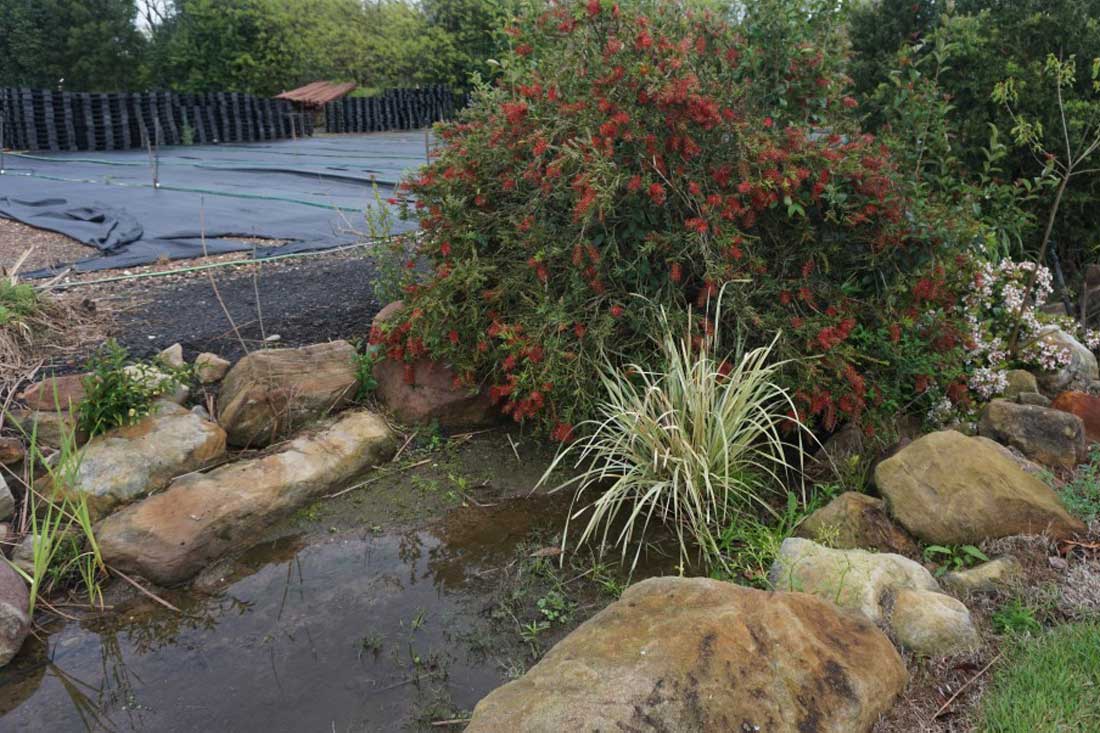Are you struggling to find plants that can thrive in both waterlogged and drought-prone conditions? This article will explore the best wet-feet plants that can tolerate both wet and dry conditions, providing practical insights and a reliable plant palette for landscape designers and home gardeners alike
Understanding Wet-Feet Plants
Wet-feet plants are specially adapted species or varieties that can survive in substrates with excessive moisture. These plants possess unique traits that allow them to thrive in conditions where the soil remains saturated for extended periods. Unlike typical landscape plants that may suffer from root rot or other water-related issues, wet-feet plants can endure and even flourish in such challenging settings.

During our wet feet trials, some plants thrived, but most plants died. Learn more here: https://www.ozbreed.com.au/summary-plants-in-various-wet-feet-conditions/
These areas include:
- Depressed Areas of the Landscape: Low-lying regions that often collect water after rain events or irrigation.
- Bio Swales: Engineered landscapes designed to manage stormwater runoff.
- Rain Gardens: Gardens specifically planted to handle rainwater.
- Dams and River Banks: Natural or artificial bodies of water where water levels can vary greatly.
Buffer Plants: Drought and Flood-Tolerant Plants
Wet areas tend to dry out over time, and without irrigation, water-loving plants can quickly perish. That’s why it’s important to select plants that can survive both excessive moisture and drought.
Research and Testing of Plants in Wet Feet Conditions
Ozbreed has carried out comprehensive research to evaluate the survivability of various landscape plants under extreme wet conditions. The study, led by our head breeder Todd Layt, encompassed three different testing areas, each presenting unique challenges to the plants.
You can read our summary of the trials here: https://www.ozbreed.com.au/summary-plants-in-various-wet-feet-conditions/
Heavy Clay Soil with Constant Water Saturation
In this testing area, the soil was perpetually saturated with water, providing a rigorous environment to test plant resilience. Among the varieties tested, Lomandra species, specifically Evergreen Baby™ and Shara™ Lomandra, showcased remarkable adaptability, achieving a 100% survival rate. Additionally, the application of Phyto guard and Rhizovital significantly boosted the survival rates of Tanika™ Lomandra longifolia plants, enhancing their resistance to root rot diseases by up to 62.5%.
Bio-Retention Swale Area
The bio-retention swale area tested the tolerance of Rhaphiolepis, Lomandra, and Westringia varieties to varying moisture levels. It was observed that the health and survivability of these plants varied significantly. Notably, older plants demonstrated better resilience and health compared to younger plants, which frequently exhibited higher mortality rates under these conditions.
Floodplain Area
In the floodplain area, the plants were subjected to multiple flooding events to assess their durability. Some plants managed to thrive in these challenging conditions, while others either perished or displayed poor health. This part of the study highlighted the varying degrees of flood tolerance among different plant species.
Key Insights
The research underscores several critical insights for landscape planners, especially those working in urban environments prone to fluctuating wet conditions:
- Survival Rates: Certain varieties have exceptional survivability in constantly saturated soils, while others struggled.
- Disease Treatment: Employing biological treatments such as Phyto guard and Rhizovital can significantly improve plant resilience against root rot, while chemical treatments can actively make the situation worse compared with no treatment.
- Plant Age: Older plants generally exhibit better health and survival rates compared to their younger counterparts in wet conditions.

Most westringias can tolerate drought, but Grey Box Westringia is one of the only westringias that can tolerate flooded conditions.
Best Buffer Plants for Wet and Dry
The plants in the below table have all passed our rigorous testing for both flooding and drought conditions, which we like to call our “buffer plants.”
Slim™ Callistemon viminalis ‘CV01’ PBR |
Macarthur™ Callistemon viminalis ‘LC01’ PBR |
Better John™ Callistemon viminalis ‘LJ1’ PBR |
Green John™ Callistemon viminalis ‘LJ23’ PBR |
Yalba™ Imperata cylindrica |
Isabella® Liriope muscari ‘LIRF’ PBR |
Just Right® Liriope muscari ‘LIRJ’ PBR |
Amethyst™ Liriope muscari ‘LIRTP’ PBR |
Katie Belles™ Lomandra hystrix ‘LHBYF’ PBR |
Lucky Stripe™ Lomandra hystrix ‘LMV200’ PBR |
Shara™ Lomandra fluviatilis ‘ABU7’ PBR |
Evergreen Baby™ Lomandra labill ‘LM600’ PBR |
Tropic Cascade™ Lomandra hystrix ‘LHWP’ PBR |
Cosmic Pink™ Rhaphiolepis indica ‘RAPH02’ PBR |
Cosmic White™ Rhaphiolepis indica ‘RAPH01’ PBR |
Grey Box™ Westringia fruticosa ‘WES04’ PBR |
Mundi™ Westringia fruticosa ‘WES05’ PBR |
Nafray® Pennisetum alopecuroides |
Conclusion
Choosing plants that can tolerate both wet and dry conditions is vital for creating resilient and sustainable gardens and landscapes. These adaptable species ensure that your planting areas remain vibrant and healthy, regardless of fluctuations in moisture levels.
